Hand-made crafts and artwork are interesting hobbies with endless possibilities. Since handicrafts depend on your level of skill and the motivation to do more, people who are into this art, like crocheters, are constantly challenged to go for more complicated projects like amigurumi.
There is a starting point for every piece of handicraft, and for crocheting, specifically, you have to learn basic techniques like forming patterns and how to switch tools to fit the task at hand, then you can progress to more advanced projects.
This article will focus on amigurumi and crochet handcrafts. Are they the same? What distinguishes one from the other? Read on for more details on these handicrafts.
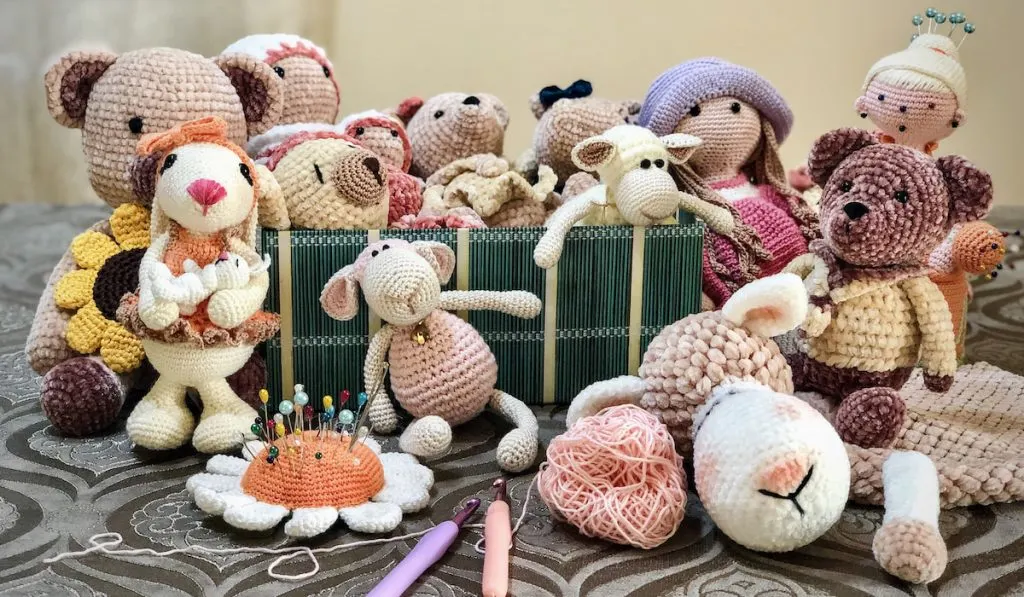
Amigurumi vs. Crochet
What is crochet? Crochet is a handcraft technique that utilizes hooks to form patterns of yarn or thread through interlocking loops at specified positions. Crocheting creates hand-made textiles like dishcloths and sweaters.
Amigurumi, on the other hand, is a specialized form of crocheting that uses a 3D design model to form crocheted toys, often taking the form of animals or mystical creatures like unicorns.
However, crocheting in the round is not enough since you will need to add stuffing to the toys to make them maintain their desired shape.
The name, Amigurumi, is coined from two Japanese words, “ami” standing for knitted or crocheted, and “nuigurumi” for stuffed dolls or toys.
Making these three-dimensional toys only requires a simple stitching pattern, often making amigurumi easier to implement as compared to other crocheting tasks that may need a combination of two or more techniques to produce a simple item.
If you already know how to crochet, you are in an advantaged position because learning to do the magic circle will be easier.
Amigurumi, however, only utilizes single crochet stitches to have a uniform surface, but there are more advanced stitch patterns like the basketweave stitch, cable stitch, and alpine stitch that are part of the single stitch family.
These extra techniques are employed in making clothes and other intricate patterns for accessories.
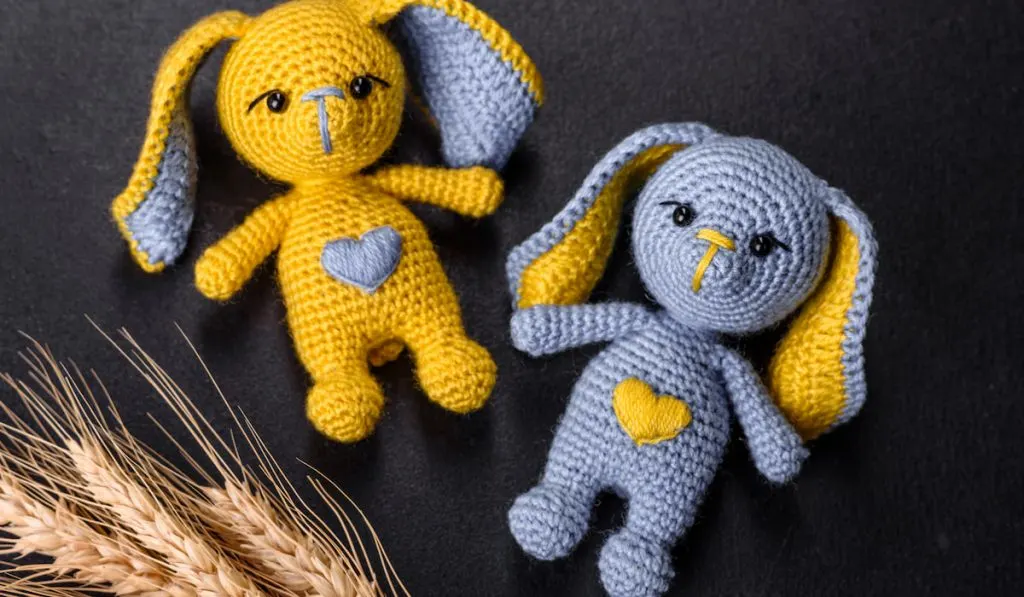
History of Amigurumi
This beautiful art was born in Japan in the 17th century during the Edo period when the Dutch traded with the Japanese, and later introduced knitting as an economic activity.
The Japanese took up the knitting culture and further cultivated it. The Japanese women were especially motivated to learn the new western needlework since education was the new normal in the whole empire.
Although it did not, originally, get the appreciation it deserved, amigurumi blew out of control in the 1970s with the upsurge of ‘kawaii’ culture, which is Japanese for ‘cute’.
With the outburst of the internet, several tutorials popped up on amigurumi making the handwork popular in the United States during the early 2000s and subsequently spreading throughout the globe.
Since they are often designed to take the shapes of pet animals or anything cute, they are especially popular with kids and anybody who is into undeniably cute toys.
They are also good for convention auctions, gifts, or you could make one as an addition to your collection, which may be more satisfying.
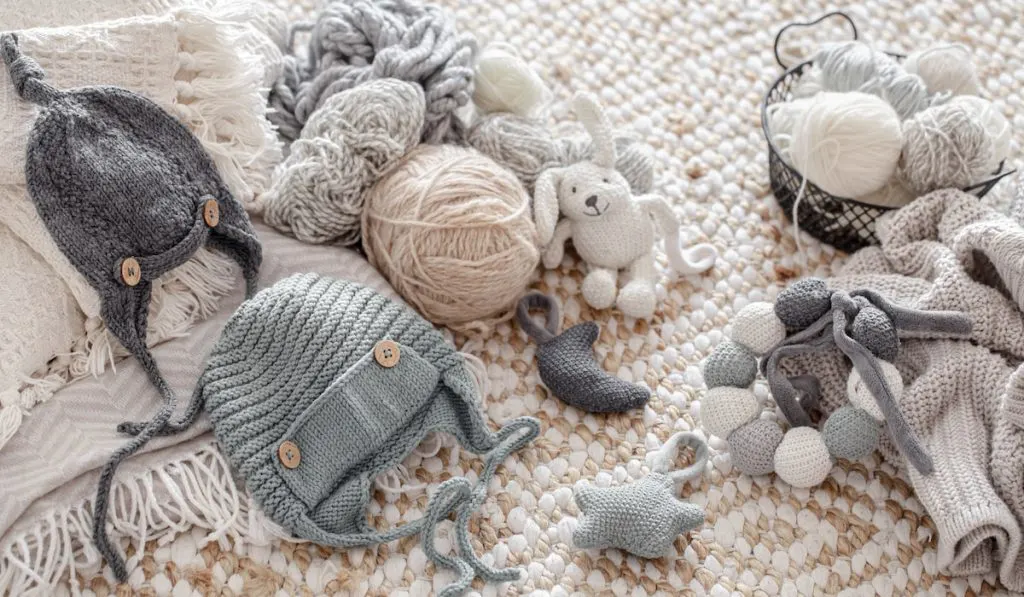
Is Amigurumi Easier Than Normal Crocheting?
Crocheting amigurumi is easier than crocheting other designs because it only requires a single technique to work the whole design. Amigurumi also requires fewer stitches to do and is most likely to be completed faster than other crochet works.
However, you cannot possibly know how to make amigurumi without having practiced crocheting basics. If you already know crocheting, making amigurumi will soon become a walk in the park after a brief introduction.
Every handcraft is done according to the skillset and experience level of the craftsman. With amigurumi, some patterns can be comfortably done by beginners, while there are more complicated patterns especially left for experts.
Some might get confused about where to start or how to start. Try coming up with a pattern for the desired doll. If you have no idea at all, there are numerous tutorials on the internet on amigurumi, and making a pattern should not be a problem.
However, no matter how you view it, you’ll never know how easy making one is until you try it.
What Supplies Do You Need to Start Making Amigurumi?
As a beginner, you may find yourself at a crossroads on what you need for kick-off at your first amigurumi task.
Since it is just like crocheting, you are free to use your crocheting tools but for an elaborate start on amigurumi, there are a few more supplies essential for the task at hand.
Let’s have a detailed look below:
Crochet Hooks
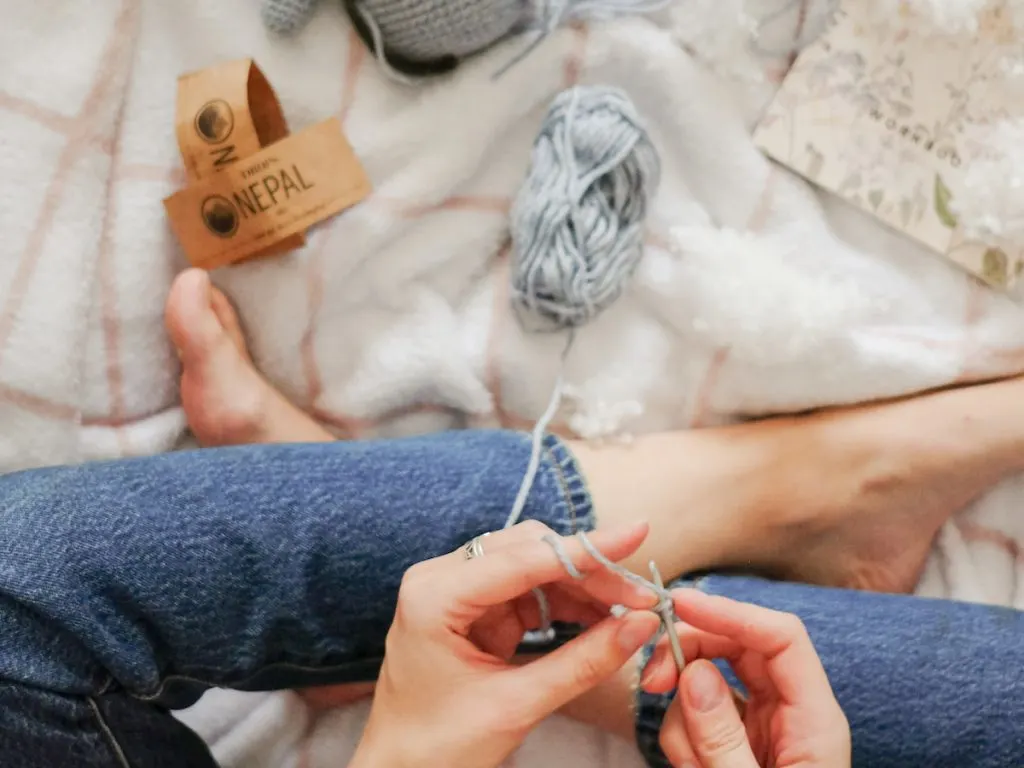
Amigurumis are best made with small crochet hooks like Clover Amour hooks because they are more comfortable and efficient in crocheting through small spaces.
Using larger needles means that bigger spaces will be left in between the yarns, and this is not good for amigurumi. Instead, 2mm to 4 mm needles work best instead of the common 6mm.
Stitch Markers
Whether you are an expert or a beginner at either crocheting or amigurumi, markers are always handy in keeping track of your fist stitch points and connector points.
Since you are working on a 3D design, markers are crucially essential to help you mark your crucial points as you crochet along.
Yarn
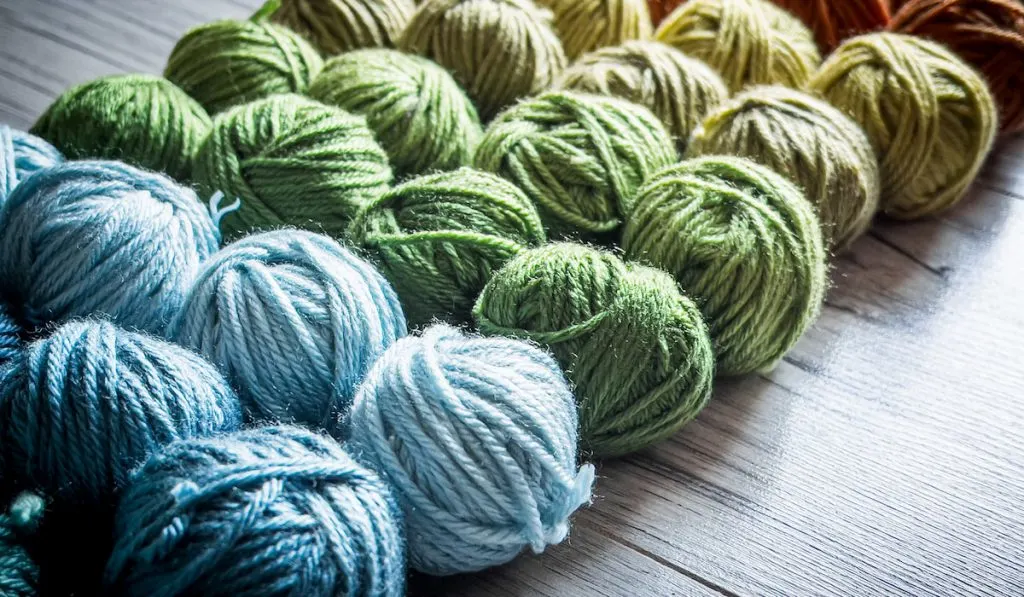
Animal-based yarn like wool, synthetic fiber like acrylic, or plant-based fiber like cotton, are all suitable for making amigurumi. However, the difference comes in when dealing with the experience level of the craftsman.
For beginners, mid-weight yarn, such as a 4-ply, is just right for any design and is suitable for them. Experts, on the other hand, can freely transition from the heaviest to the lightest yarn, depending on how they want to manipulate them to get desired looks.
Safety Eyes
Safety eyes are screw-like eyes often used to fit into the toys as eyes. They have their own sets of washers and once put in place, they cannot be shifted. You should therefore be accurate with your positioning to avoid future issues.
Alternatively, you can carefully sew in eyes with cotton yarn, or attach large beautiful buttons in place of eyes.
Fiber Fill/Stuffing
Polyester fiber offers the best filling for your amigurumi because of its exceptionally fluffy feel.
You can alternatively use yarn scraps or poly beads to add to the filling.
What Techniques are Essential to Crafting Amigurumi?
For starters, any form of tutorial helps learn the first steps to amigurumi. For a good start, here are a few basic skills you need to be equipped with.
Holding the Hook
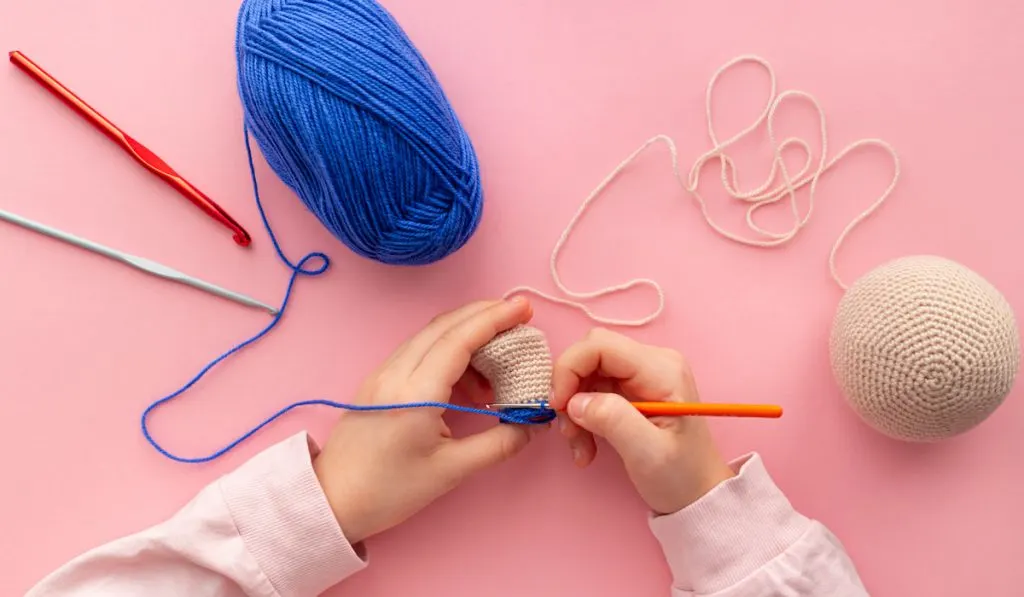
Depending on your preference and what works best for you, you can hold the crochet hook with either a pencil grip or a knife grip.
Make a Slipknot
This is how you use your crochet hook to make a loop with the yarn. There are different approaches to this, so you should find one that works best for you.
Making a Chain
With your first slipknot in place, take your time to master how to make a chain for as long as the desired pattern asks for. Yarn chains often look like v-shapes and are made by hooking and tautly pulling the yarn through the slip knots to form a yarned pattern.
However, you should maintain the stitches at an even rate, neither too tight nor loose to avoid latter shape complications.
Sewing
Since the body parts of any amigurumi are independently made, you should know how to piece it all together by sewing.
Learn to do The Magic Circle
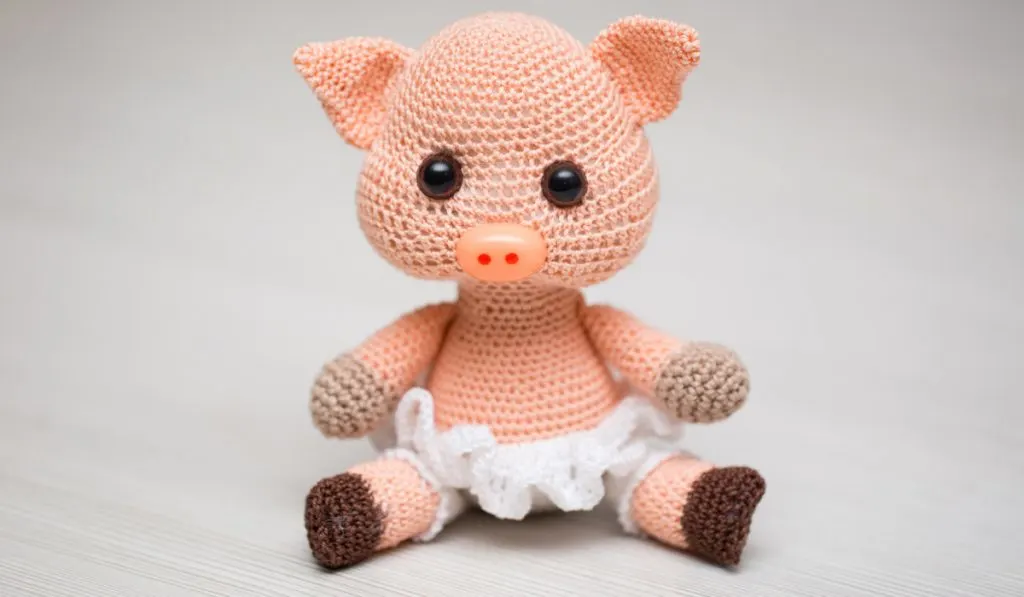
3D modeling is the backbone of amigurumi. First off, learn to crochet a ring and add additional loops into the main ring to have a foundation to crochet the design on.
Once you have the backbone of the design in place, you can spirally crochet the yarn up the loops. After a few repeated stitches, you will have your amigurumi ready to be stuffed.
Subsequently, you need to master how to adjust the sizes with the yarn, by either increasing or decreasing the yarn to attain desired shapes when going about the design.
Mastering this art might be a bit challenging at the beginning, but as soon as you get used to it, you will realize how easy it gets as you do make more dolls.
Distinguish the Fabric’s Right and Wrong Sides
When crocheting amigurumi, you must distinguish the right and wrong sides of the yarn as you crochet along.
This will help you keep the crochet uniform, and is crucial later when turning the finished amigurumi model to show the right side before stuffing.
Stuffing

The goal of stuffing an amigurumi is to get the desired design shape without overloading the model to make it hard. It should just be gentle enough to make it soft and cozy.
To achieve this, gradually add the stuffing material to the model while squishing it around to have the desired shape.
Marking
Markers help crocheters keep track of the starting or end positions, and are often incorporated alongside the yarn while crocheting. Since they are of a different color, it makes it easy to identify them, and they can also be easily removed once the task is complete.
Besides the common fabric yarn of a different color, markers are also available in plastic materials, or as small pins inserted into the stitches to mark the respective positions.
Counting Stitches
Keeping count of stitches is something crucial to amigurumi modeling. Depending on what you are modeling, specific designs have specific stitch counts.
Therefore, if you realize that one count is off from the desired model, it is best to undo it and repeat the whole round if you want good results.
Other Crocheting Techniques Not Applicable in Amigurumi
Besides the magic circle, there are other crocheting techniques not applicable to amigurumi but are useful in designing crochet accessories and garments. Let’s have a look;
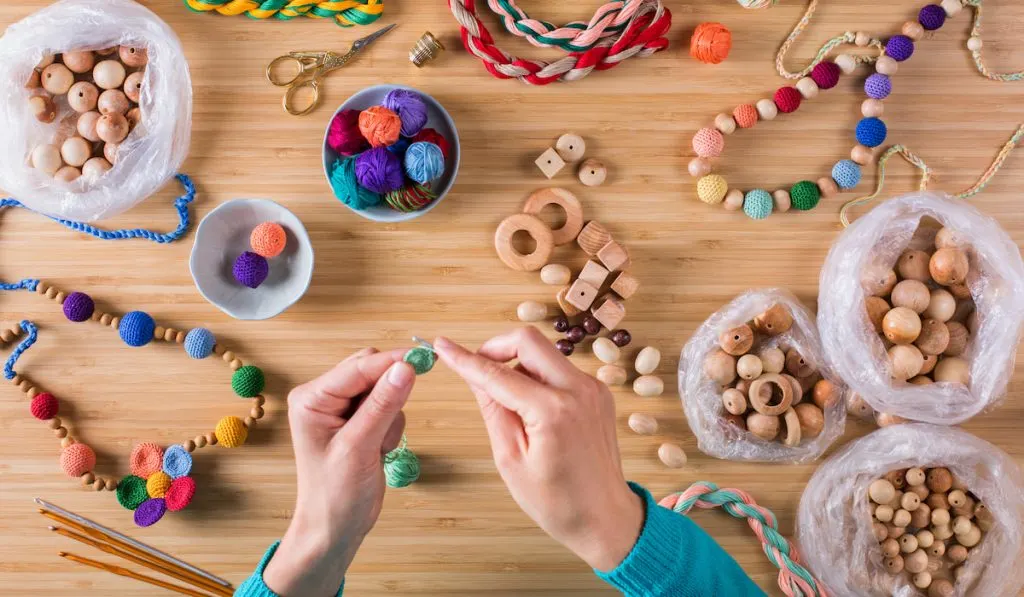
- Cable stitch – Widely applied in a variety of accessories from blankets to hats, cable stitches are made by skipping a set of stitches then interchanging the knit positions by crossing the front over the back to create an illusion of a twisted cable.
- Whipstitch – This is a simple sewing trick that creates multiple stitches around a fabric by continually passing the needle in and out. They are especially helpful in enjoining separate pieces together and giving crochet protection.
- Bead crocheting – Once you are into crocheting, beadwork should not be hard to learn. Beadwork is just as fun, and easy to learn.
- Fabric crocheting – This kind of crocheting entails major projects such as making crocheted rugs and bags. Since they use long strings of yarn and fabric, you are free to incorporate a range of colors for the desired visual interest.
- Tunisian crocheting technique – Similar in many ways to knitting, Tunisian crocheting uses different sets of crocheting hooks, almost similar to knitting needles, which give you room to incorporate unique patterns for more details and depth in your crocheting tasks.
- Surface crocheting technique – Once your crochet patterns are done, you can add visual interest to the designs by incorporating imagery like stars on the crocheted surface with this technique.
Are Amigurumi Techniques Applicable in Other Crocheting Tasks?
Yes, many crocheting tasks borrow the techniques applied in amigurumi. Besides, amigurumi is part of the crochet family.
Magic circles, for example, are not only used for animal models but are also applicable in making crochet hats, ornamentals and bags. In amigurumi, magic circles are made as foundations of 3D models, but you can alternatively switch the magic circle for use in a 2D design.
Conclusion
Amigurumi is a sub-class of crocheting. However, when working with amigurumi, you have to get creative to explore the limitless possibilities of the culture. With specific tutorials and design, you can start making your models and soon enough you won’t be needing any help to make whichever design you desire.
If you already have crocheting skills, grasping amigurumi’s skillsets should not be hard. Besides, with any kind of crocheting, the learning never stops! Once you get started with amigurumi too, the fun is never enough!
Resources
- https://mymodernmet.com/amigurumi-patterns/
- https://www.crochetcoach.com/lessons/types-of-crochet/
- https://whatnerd.com/what-is-amigurumi/
- https://hearthookhome.com/amigurumi-tips-tricks-beginners/
- https://littleworldofwhimsy.com/whats-the-difference-between-crochet-and-amigurumi/
- https://www.tinycurl.co/what-is-amigurumi/
- https://japanobjects.com/features/amigurumi
